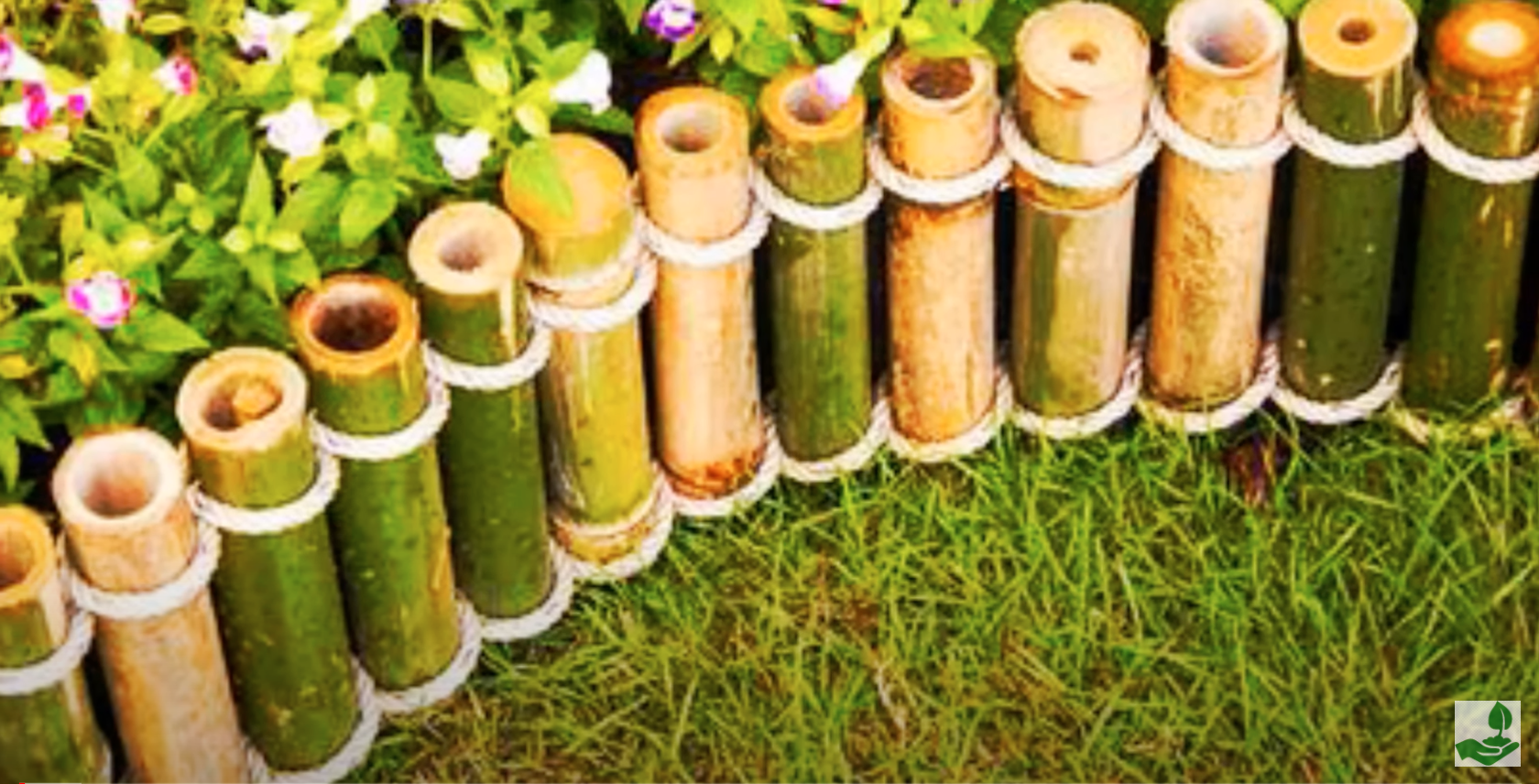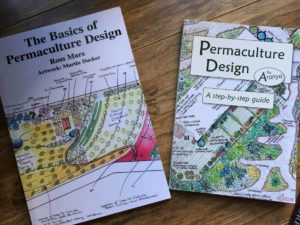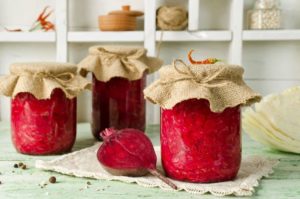DIY garden fences are a cheap and easy way to keep unwelcome animals and pests away from a garden and crops. A DIY garden fence can also provide privacy and improve the aesthetic appeal of a property.
There are various types of DIY garden fences, made from different materials. A simple metal fence made from cheap materials that are easily sourced is adequate to keep stray bunnies from munching the produce in a vegetable patch, while a traditional white picket fence looks pretty and is functional in keeping pets and children in and demarcating the property line. All of these fences have different plants for your fence lines that you can use.
Split Rail Fence
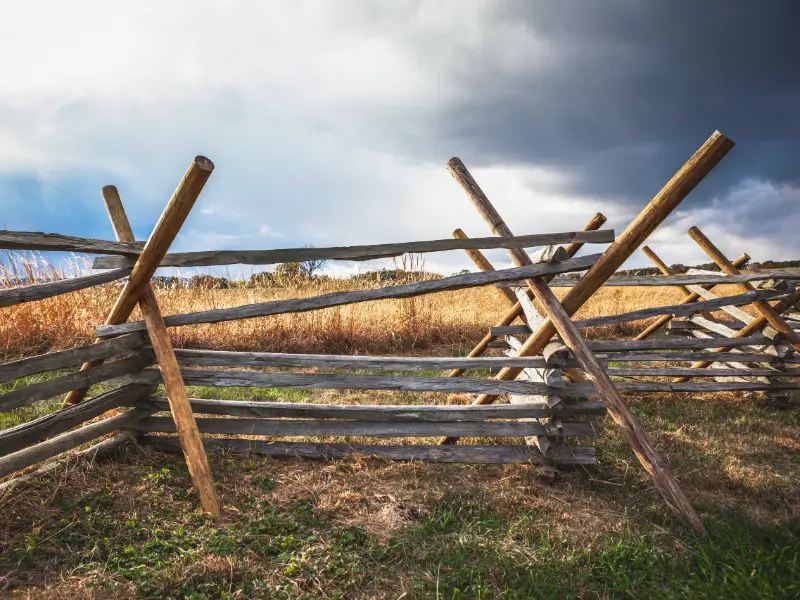
A split rail fence is ideal for keeping large animals from wandering onto a property. This fence is useful to demarcate a boundary without blocking visual access. A split rail fence has a rustic look and is ideal for large properties in country areas.
Made from natural wooden logs, a split rail fence is a garden fence with a gate, allowing easy access to the property while keeping intruders away. Building a split rail fence is easy and doesn’t require complicated equipment.
Materials needed for a split rail fence include wooden upright posts and horizontal rails. The posts have holes cut into them at measured distances, and the rails slide into the slots, forming a barrier fence. The post holes should be filled with cement to secure the posts sturdily.
Split Rail Wire Mesh Fence
A split rail wire mesh fence is an adaptation of a basic split rail fence, with wire mesh closing the gaps between the rails. This type of garden fence with a gate is perfect for keeping big animals away and for preventing smaller critters like neighborhood bunnies from eating your veggies.
If you have small animals that tend to wander, a split rail wire mesh fence is the answer for keeping them in.
Constructing a split rail wire mesh fence is simple. Horizontal rails and wooden upright posts secured with cement make up the basic structure of the split rail wire mesh fence, with regular fencing wire or chicken wire nailed to the posts.
Hog Wire Privacy Fence
A hog wire privacy fence has a solid wooden base with a wire top section. This multipurpose fence provides a limited amount of privacy and prevents outsiders from seeing into your property, but allows you to see out through the wire mesh section.
A hog wire privacy fence is an attractive garden fence with a gate to allow supervised access, but stray animals can’t roam onto your property and your own animals are contained.
Building a hog wire privacy fence is challenging for someone with limited DIY skills, but it can be done. Secure wooden upright posts into the ground with cement. Use either solid wooden panels or flat wooden planks for the bottom section of the fence, and wire for the top.
Recycled Timber Fence
A fence made of recycled timber is cheap and easy to build. This fence offers privacy and prevents unwelcome animals and pests from wandering into the garden.
A recycled timber fence is a simple garden fence with an old-world, rustic look that would suit a country property. Build this fence either with or without a gate, depending on individual needs.
Materials needed to build a recycled timber fence are assorted planks made of recycled timber or old offcuts from other projects. Give the fence a quirky look by using planks of different lengths.
White Picket Fence
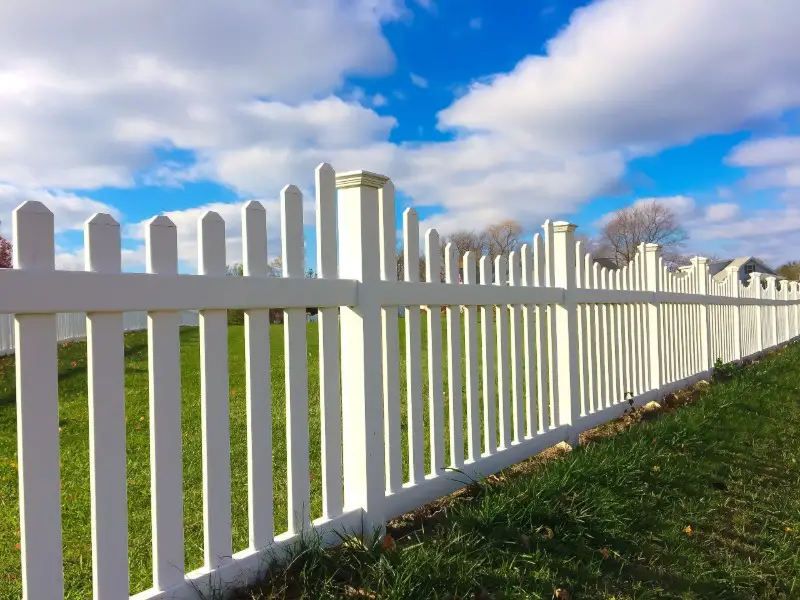
A traditional white picket fence is a simple garden fence, either with or without a gate, that adds a unique charm to the appearance of a property. The height of a picket fence varies according to needs.
If the fence is only to keep small critters out, a low fence is sufficient. If the fence needs to keep bigger animals out and provide privacy, the fence should be higher.
A picket fence is made from wood or vinyl. Pine or cedar wood are the most common choices. White paint finishes off the look of a picket fence perfectly.
Geometric Wood Fence
A geometric wood fence is made from wooden beams that have been placed diagonally in a criss-cross formation, creating an attractive pattern. This fence keeps stray animals out, keeps your own animals in, and demarcates the boundary of the property.
A geometric wood fence is a good choice for a family with young children, because the angle of the wooden planks in the diamond-shaped pattern make the fence difficult to climb.
The large diamond-shaped gaps in a geometric wood fence ensure a clear view beyond the property, creating a feeling of openness. This type of fence is only recommended as a small garden fence, because it is complicated to build and takes lots of time to erect.
A geometric wood fence is made from wooden planks of uniform size that have been strategically positioned in a diamond pattern and secured with nails.
Geometric Wood Fence with Wire
A geometric wood fence with wire is similar to a regular geometric wood fence, but with the added security due to covering the gaps with wire. The wire prevents small animals like rabbits and other smaller pests from paying an unwelcome visit.
Like a regular geometric wood fence, a geometric wood fence with wire is only recommended as a small garden fence, because this type of fence is also complicated to build and takes lots of time to erect.
A home with a puppy or bunny as a pet benefits from a geometric wood fence with wire. This fence is attractive and practical, providing a clear view to the outside world while restricting movement.
Materials needed to make a geometric wood fence with wire are flat wooden planks of uniform size, nails, and either regular fencing wire or chicken wire.
Stepped Wood Fence
A stepped wood fence is a simple garden fence built in a step formation, with separate sections of the fence installed in consecutive graded heights. This style of fence is ideal for a property on a hill or a sloped piece of land with a steep gradient.
A hilly property is a great place for a stepped wood fence. The height of each section of the fence can be adapted to suit the gradient of the land, providing privacy from every vantage point on the hill.
A stepped wood fence is made from horizontal slats of wood with supporting upright posts. For total privacy, place the slats one directly on top of another. For greater visibility, leave a small gap between each slat.
Pallet Fence
Repurposed wooden pallets make excellent material for a DIY garden fence because recycled pallets are cheap and are often even available at no cost. The pallets can be arranged in many different designs, depending on personal preference and the purpose for which the fence is needed.
A pallet fence is a simple garden fence that is useful for keeping stray animals away and for keeping desired animals in. Pallet fences often have a gate made out of a single pallet.
A pallet fence in its original wooden state offers a rustic look well-suited to a rural house. For a more formal or modern look, paint the wood in a color to suit the style of the house, or use a dark wood stain.
Arbor Fence
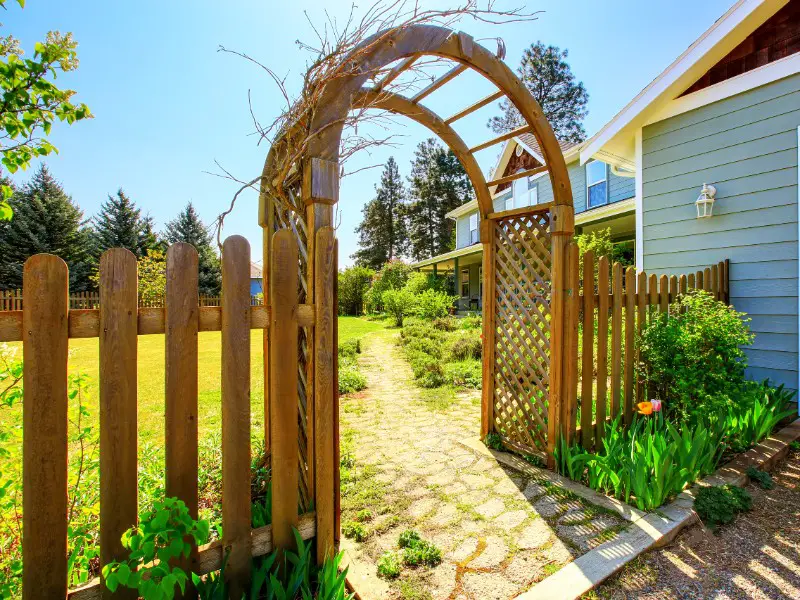
An arbor is an upright structure that is great for vertical planting and can be part of a garden fence. An arbor serves as an entrance and often contains a gate within the structure.
Vines grow along the sides and over the top of the arbor, giving it style. Arbors often have trellis fence pieces attached to the sides, with pretty vines or creepers intertwining through the criss-cross pattern of the trellis.
An arbor is built with posts and beams made of wood or metal. Wood is the best material for the trellis part of the arbor because it gives the fence a more natural look.
“Live” Fence
A “live” fence is a simple garden fence that is covered with a growing plant, for example a climbing rose bush. A grape vine makes an ideal edible live fence. When planning a live fence, take into consideration the fully-grown size of the climbing plant.
Plant shrubs like the bayberry bush, far enough apart to give the mature shrubs sufficient room. Don’t worry if the fence initially looks sparse, with a lot of empty gaps. The gaps will soon fill up with healthy greenery and flowers.
Wire or lattice fences are the most suitable materials for a live fence, because these fences give the plants something to climb.
A live fence requires some maintenance. Every few weeks, thread the vines of the plant through the latticework of the fence to encourage the plant to climb and fill the gaps in the fence. Trim the plants regularly to keep the fence looking neat.
Wattle Fence
A wattle fence is a woven wood fence that is used for livestock management, a nifty outdoor design, or be used as a garden fence. Wattle fences are cheap and sustainable because they’re made out of wood.
Pointed Wood Fence
A pointed wood fence is a simple garden fence made from flat wooden slats that have been cut into a point at the top, instead of being left with a straight finish.
A pointed wood fence suits the look of a house with a peaked roof. The pointed shape of the wooden slats echoes the points of the roof peaks, giving the property a symmetrical look.
Cedar wood or pine slats are good materials to use for a pointed wood fence because these woods are easy to cut into a sharp, even point. Making a pointed wood fence is time consuming, but it is a simple job.

